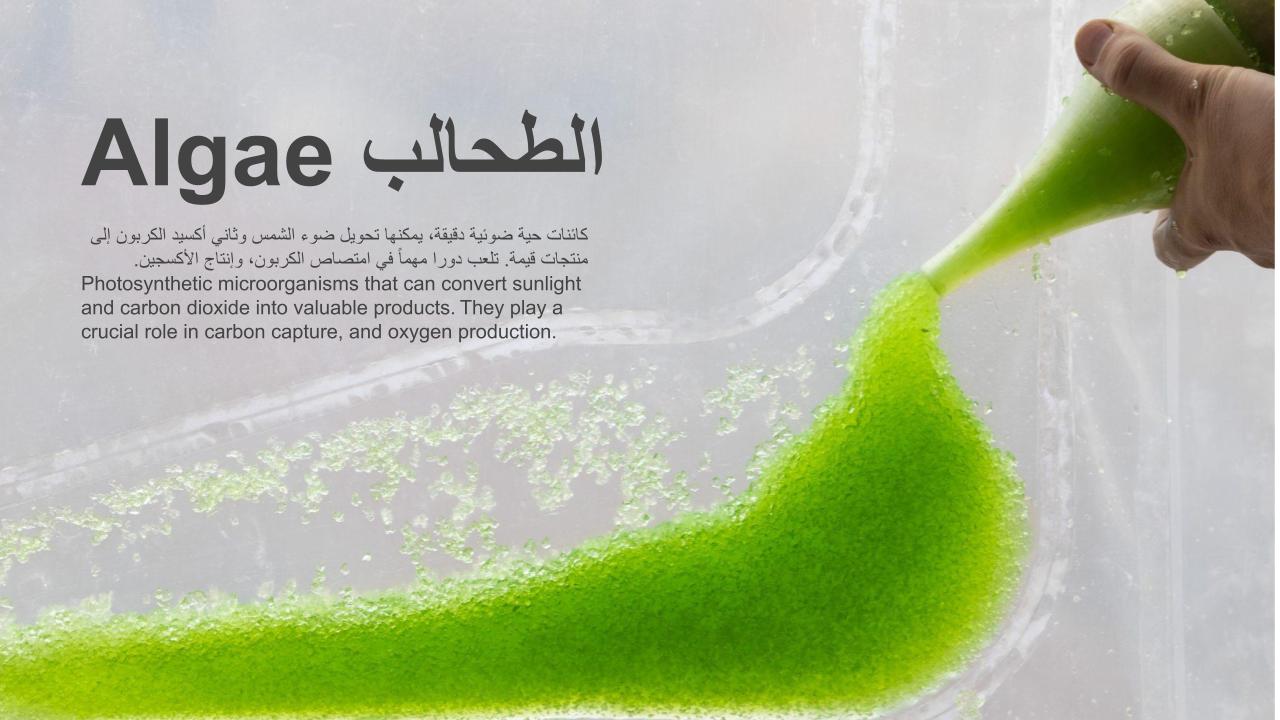Celebrate Earth Day with our DIY Algae Reactor Workshop! Designed for teens aged 18-24, this hands-on session explores the science of algae cultivation to boost oxygen production. Participants will build their algae reactors, fostering creativity and environmental stewardship. Let’s make a difference—one algae reactor at a time.
احتفل بيوم الأرض في ورشة عمل مفاعل الطحالب الذي يمكنك صنعه بنفسك! تهدف هذه الجلسة العملية إلى استكشاف علم زراعة الطحالب لتعزيز إنتاج الأكسجين، وهي مصممة لليافعين الذين تتراوح أعمارهم بين 18 و24 عامًا. سيقوم المشاركون ببناء مفاعلات الطحالب الخاصة بهم، لتعزيز الإبداع وحماية البيئة. لنحدث فرقًا — مفاعل طحالب واحد في كل مرة.
Learning outcomes
نتائج التعلم
بيولوجيا الطحالب: سيستقصي المشاركون تعقيدات الطحالب ككائنات حية، واستكشاف بيولوجيتها، أدوارها البيئية، وأهميتها في النظم البيئية.
أساسيات الإلكترونيات: من خلال التدريبات العملية، سوف يتعلم المشاركون أساسيات الإلكترونيات، ويكتسبون نظرة حول المكونات والدوائر والأنظمة الإلكترونية الضرورية لبناء مفاعلات الطحالب مع إمكانية تحكم متكاملة.
مقدمة عن البرمجة: ستعرّف ورشة العمل هذه المشاركين على أساسيات البرمجة، وستقدم تمهيداً سهلاً للمبتدئين عن لغات البرمجة والمفاهيم ذات الصلة بالتحكم في الأنظمة الإلكترونية داخل مفاعلات الطحالب.
الوعي البيئي والاستدامة: من خلال دراسة العلاقات الرابطة بين زراعة الطحالب وإنتاج الأكسجين والسلامة البيئية، سيعمل المشاركون على فهم أعمق لقضايا الاستدامة وضرورة اعتماد ممارسات صديقة للبيئة.
تكامل العلوم والتكنولوجيا من أجل الحلول البيئية: من خلال منهج شامل، سيستكشف المشاركون كيف يمكن الاستفادة من التكامل بين العلوم والتكنولوجيا والهندسة لمواجهة التحديات البيئية، وتعزيز الابتكار وحل المشكلات من أجل مستقبل أكثر استدامة.
Preparation for the workshop
During the workshop participants learn about Algae as living organisms, electronics, coding and the environment!
To run the workshop there is some preparation to do. Here are the materials to prepare before the workshop.
STEP 1 – Finding some bottles to up-cycle and make 2 holes on one cup and 1 hole on the other cup (1)
STEP 2 – Laser cut the file attached named “Air pulp holder” (we used acrylic but plywood could be a great choice as well) (9)
STEP 3 – Find a tube (aquarium type), the diameter should be 4mm to fit the Air Pump (5)
STEP 4 – Find some T shape connectors (1x Participant) (8)
STEP 5 – Collect some Algae samples or you can order them online (in this way you will have a pure culture)
STEP 6 – You can additionally 3D print a case for the Air Quality Sensor (12)
Electronics per participants
Nutrients in each bottle
Now you are all set!
مفاعل الطحالب DIY Algae Bioreactor

.jpg)
.jpg)
.jpg)
Fill the bottles with the algae culture, nutrients and bottles. We used two bottles because this way it balances the power of the air that is pushed inside the bottle (Alternatively you can also use a bigger container.
Add the tubes, the air pump and the air pump holder Follow the construction as shown in the picture.